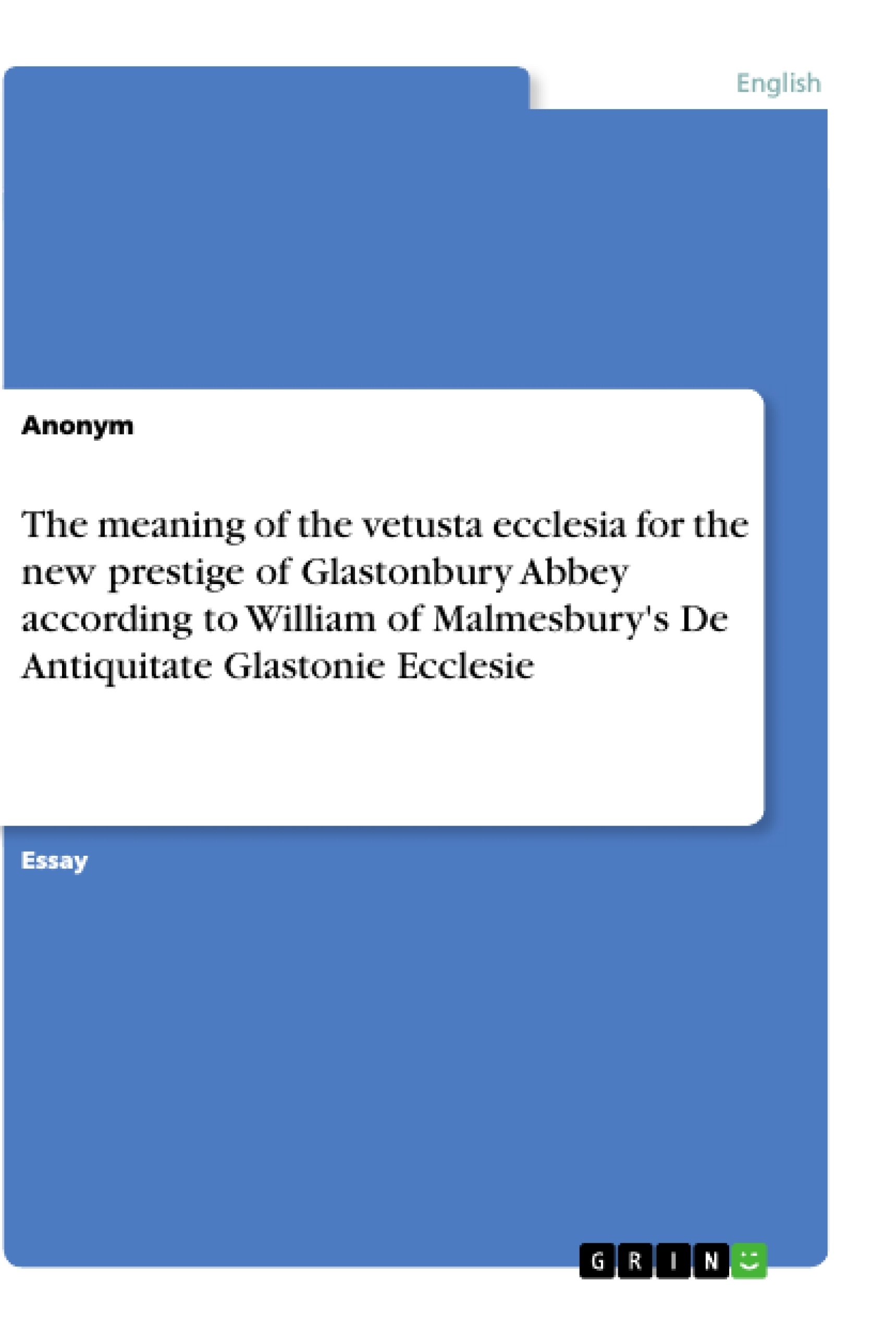To be busy with the history of Glastonbury Abbey, you have to differentiate between the
early history and the time after the Norman conquest. Especially on closer inspection of
the early history a big problem takes place: All traditions like architecture, written and
painted sources have been destroyed by the big fire of 1184. That is why the today known
early history of Glastonbury Abbey is only based on myths and sources that had been
written after the fire.
The most important is the “De Antiquitate Glastonie Ecclesie” by William of
Malmesbury.
Inhaltsverzeichnis (Table of Contents)
- Introduction
- The meaning of the vetusta ecclesia for the new prestige of Glastonbury Abbey according to William of Malmesbury's „De Antiquitate Glastonie Ecclesie”
- The situation of crisis in Glastonbury after the Norman conquest
- William of Malmesbury and the “De Antiquitate Glastonie Ecclesie”
- The legend of the prehistoric church “vetusta ecclesia”
- The meaning of the vetusta ecclesia for the Abbey
- Conclusion
- List of work cited
Zielsetzung und Themenschwerpunkte (Objectives and Key Themes)
This essay aims to investigate the significance of the vetusta ecclesia in shaping the new prestige of Glastonbury Abbey after the Norman conquest, with a specific focus on William of Malmesbury's “De Antiquitate Glastonie Ecclesie”.
- The impact of the Norman conquest on Glastonbury Abbey.
- The role of William of Malmesbury's “De Antiquitate Glastonie Ecclesie” in establishing Glastonbury Abbey's historical significance.
- The legend of the prehistoric church “vetusta ecclesia” and its contribution to the Abbey's prestige.
- The importance of the vetusta ecclesia in maintaining the Abbey's traditions and identity.
Zusammenfassung der Kapitel (Chapter Summaries)
The introduction explores the challenges of researching the early history of Glastonbury Abbey, highlighting the impact of a fire in 1184 that destroyed much of the Abbey's historical record. The essay argues that William of Malmesbury's “De Antiquitate Glastonie Ecclesie” is a key source for understanding the Abbey's early history.
The second chapter delves into the significance of the vetusta ecclesia for the new prestige of Glastonbury Abbey after the Norman conquest. It examines the crisis the Abbey faced following the conquest and the monks' efforts to maintain their tradition and history. This chapter also introduces William of Malmesbury and his role in writing the Abbey's history.
The third chapter examines the legend of the vetusta ecclesia, tracing its origins and development. It highlights William of Malmesbury's careful approach to writing about the very early history of the prehistoric church.
Schlüsselwörter (Keywords)
The essay focuses on the Norman conquest, Glastonbury Abbey, the vetusta ecclesia, William of Malmesbury, “De Antiquitate Glastonie Ecclesie”, and the historical significance of the Abbey. It also explores themes of tradition, history, and the impact of cultural change on monastic institutions.
- Quote paper
- Anonym (Author), 2006, The meaning of the vetusta ecclesia for the new prestige of Glastonbury Abbey according to William of Malmesbury's De Antiquitate Glastonie Ecclesie, Munich, GRIN Verlag, https://www.grin.com/document/161740




